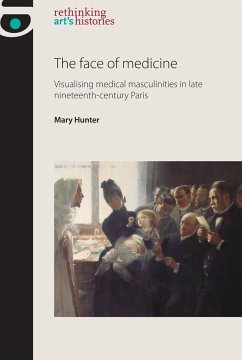The face of medicine examines the overlapping worlds of art and medicine in late nineteenth-century France. It sheds new light on the relevance of the visual in medical and scientific cultures and on the relationship between artistic and medical practices and imagery. By examining previously unstudied multi-disciplinary sources, this original study rethinks the politics of medical representations and their social impact. Hunter argues that artworks and medical collections played a key role in forming the public face of scientific medicine. Through a focused examination of paintings from the 1886 and 1887 Paris Salons that portray famous men from the medical and scientific elite - Louis Pasteur, Jules-Émile Péan and Jean-Martin Charcot - along with the images and objects that these men made for personal and occupational purposes, she explores how the masculinities of eminent medical men were visualised. Anatomical wax models, painted portraits, medical photographs and popular caricatures, amongst other items, were central to individual and collective identities, social and professional exchanges and to the production of knowledge. The face of medicine investigates the medical community's use of art and aesthetics and the art world's cultural appropriation of scientific principles. It explores how artists, physicians and scientists worked together to produce depictions of bodies, diseases and sexualities that were considered as real as possible and examines the competing claims to truth made by different media, stylistic practices and professions. It will appeal to all those interested in the cultural and visual history of medicine - academics and students in art history, visual culture, gender studies, French history, museum studies, and the medical humanities.

